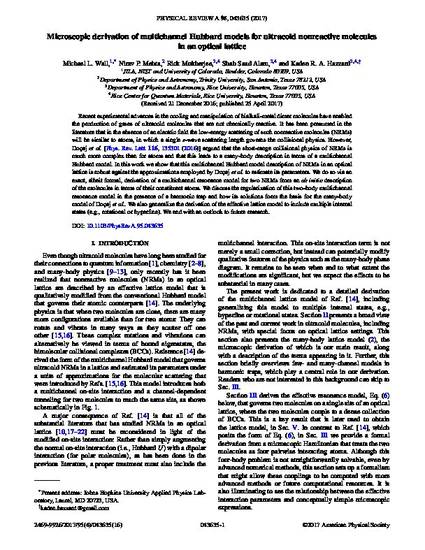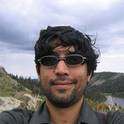
Recent experimental advances in the cooling and manipulation of bialkali-metal dimer molecules have enabled the production of gases of ultracold molecules that are not chemically reactive. It has been presumed in the literature that in the absence of an electric field the low-energy scattering of such nonreactive molecules (NRMs) will be similar to atoms, in which a single s-wave scattering length governs the collisional physics. However, Doçaj et al. [Phys. Rev. Lett. 116, 135301 (2016)] argued that the short-range collisional physics of NRMs is much more complex than for atoms and that this leads to a many-body description in terms of a multichannel Hubbard model. In this work we show that this multichannel Hubbard model description of NRMs in an optical lattice is robust against the approximations employed by Doçaj et al. to estimate its parameters. We do so via an exact, albeit formal, derivation of a multichannel resonance model for two NRMs from an ab initio description of the molecules in terms of their constituent atoms.We discuss the regularization of this two-body multichannel resonance model in the presence of a harmonic trap and how its solutions form the basis for the many-body model of Doçaj et al..We also generalize the derivation of the effective lattice model to include multiple internal states (e.g., rotational or hyperfine). We end with an outlook to future research.
